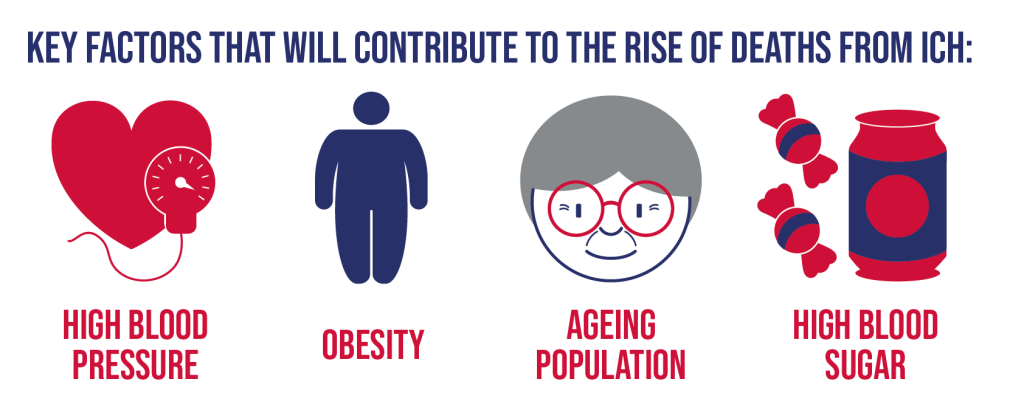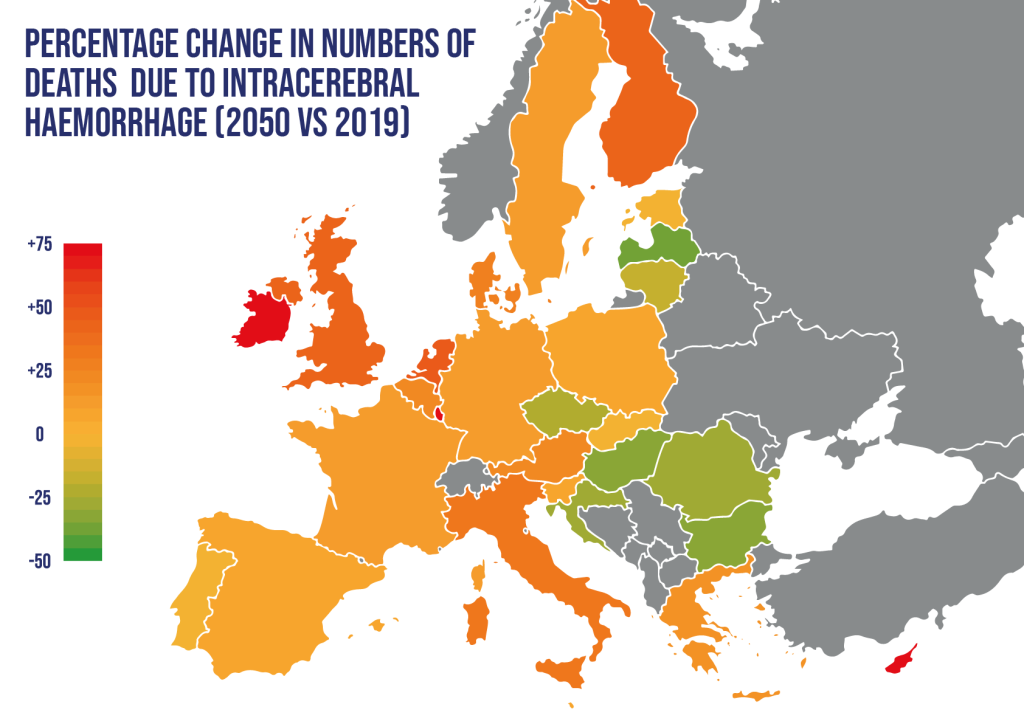
New PRESTIGE-AF research predicts that deaths from intracerebral haemorrhages (ICH) will increase by 8.9% across Europe by 2050 – with some countries expected to have increases of up to 74.4%.
Published in The Lancet Regional Health – Europe by PRESTIGE-AF researchers based at King’s College London, the study says that the number of cases and deaths from ICH is set to increase across the continent, despite a downtrend observed in the past thirty years.
The research shows that PRESTIGE-AF’s goal of understanding how best to treat ICH patients with atrial fibrillation will only become more important as the burden of ICH increases over the next three decades.
While predications saw a decline in individual risk, results showed that the absolute number of new cases and related deaths is expected to rise on a population level. The researchers believe this is because of Europe’s ageing population, who are particularly affected by the condition and contribute significantly to the growing burden.

“With an ageing population across the UK and Europe and the anticipated increase in the proportion of older adults, the findings emphasise the importance of planning for rising healthcare demands and caregiving needs to tackle the anticipated surge in intracerebral haemorrhage cases and related deaths,” said Professor Yanzhong Wang, Professor of Statistics in Population Health, Kings College London.
The research shows significant variation in predicted ICH burden across the continent. The top five countries with the biggest increase in deaths are:

This highlights the need for country-specific action plans and a need for ongoing research to monitor epidemiological trends, risk factor prevalence, and disease mechanisms, enabling refined projections and targeted interventions against ICH.
“We developed a sophisticated modelling framework to anticipate the future health burden of intracerebral haemorrhage,” said Hatem A Wafa, Research Associate and Trial Statistician, Kings College London. “By considering multiple scenarios, the study offered a range of potential trajectories between 2019 and 2050. Key factors that contribute to the rise of deaths are high blood pressure, high blood sugar and obesity.”
Unlike previous studies, this research not only projected an increase in ICH cases but also offers unique insights into the potential trajectories and implications for healthcare systems.
By unveiling the potential challenges and opportunities, the authors hope that this insight can guide policymakers and healthcare professionals in developing strategies to tackle the anticipated surge in ICH cases and related deaths and the evolving landscape of stroke in the coming decades.
